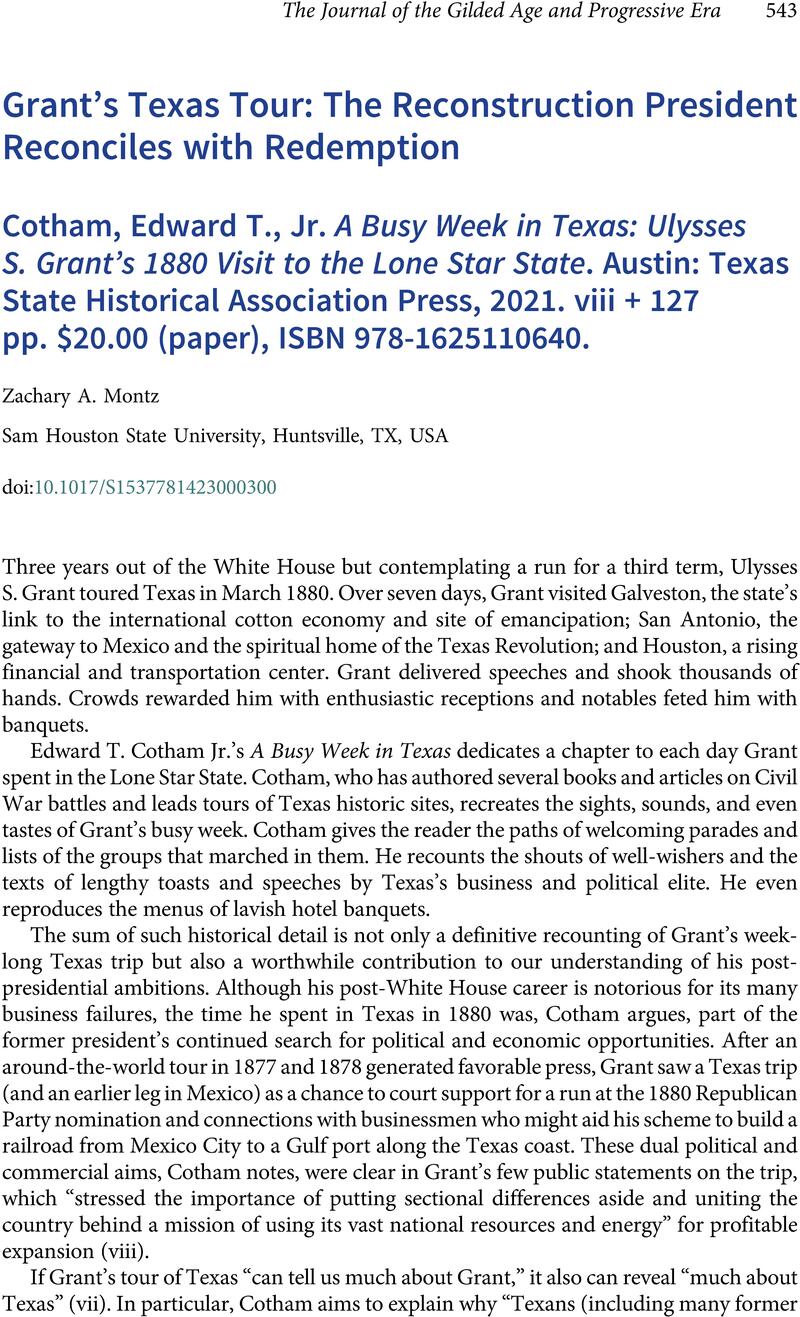No CrossRef data available.
Article contents
Grant’s Texas Tour: The Reconstruction President Reconciles with Redemption - Edward T. CothamJr.A Busy Week in Texas: Ulysses S. Grant’s 1880 Visit to the Lone Star State. Austin: Texas State Historical Association Press, 2021. viii + 127 pp. $20.00 (paper), ISBN 978-1625110640.
Review products
Edward T. CothamJr.A Busy Week in Texas: Ulysses S. Grant’s 1880 Visit to the Lone Star State. Austin: Texas State Historical Association Press, 2021. viii + 127 pp. $20.00 (paper), ISBN 978-1625110640.
Published online by Cambridge University Press: 15 December 2023
Abstract
An abstract is not available for this content so a preview has been provided. Please use the Get access link above for information on how to access this content.

- Type
- Book Reviews
- Information
- Copyright
- © The Author(s), 2023. Published by Cambridge University Press


